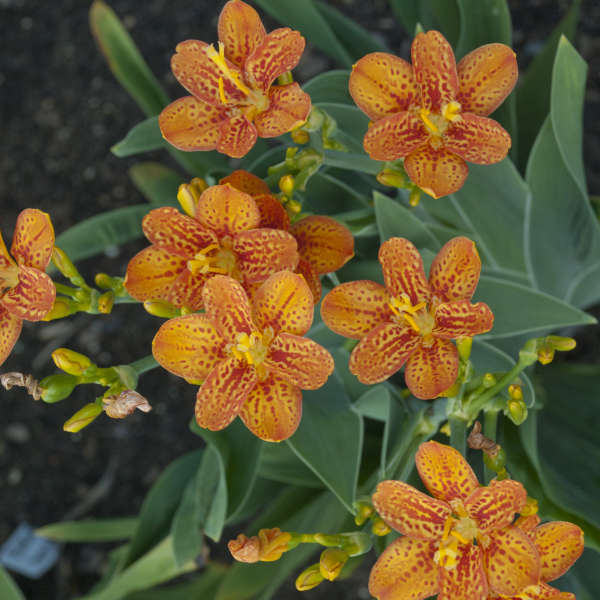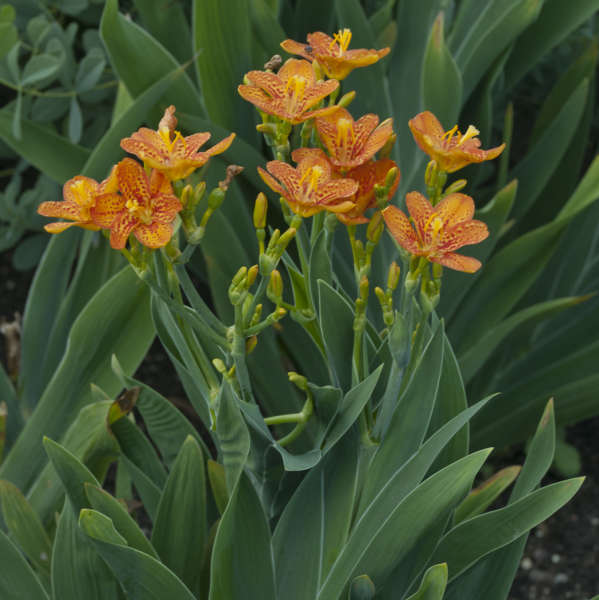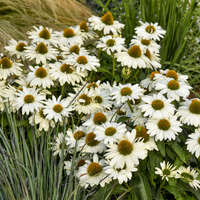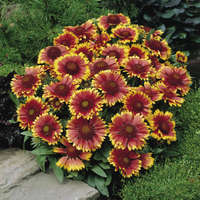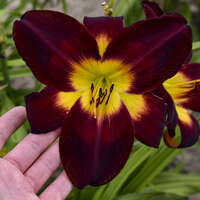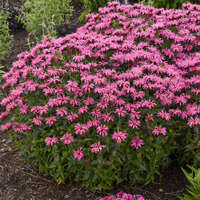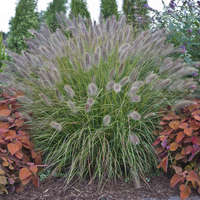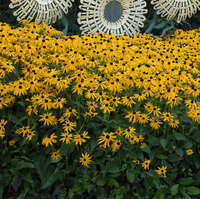Belamcanda chinensis 'Freckle Face'
Common Name: Blackberry Lily
This unique perennial produces a profusion of two inch wide, brilliant orange blossoms with heavy red specking and shading on each of the six overlapping petals. They are produced atop mid-sized plants with green, sword-shaped foliage like that of a tall bearded iris.
In our growing fields, we have observed this plant having a resistance to Cercospora leaf spot, a disease nicknamed "fish eye" which it resembles. The foliage remains clean all season long here in Michigan.
Belamcanda blooms for weeks in late summer, and its season of interest is extended into fall with the interesting seed pods which develop. Tan, pear-shaped pods burst open to reveal clusters of black seeds resembling blackberries, hence the common name. They are persistant thru the winter and are attractive in fresh or dried flower arrangements.
Grade #1 Bare Root |
